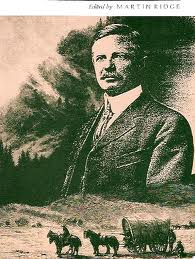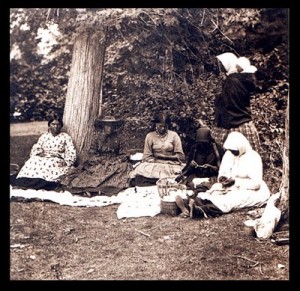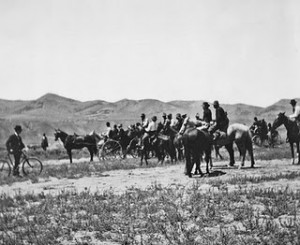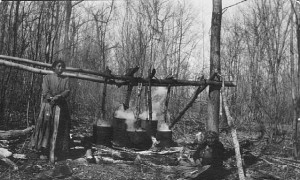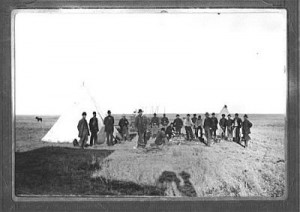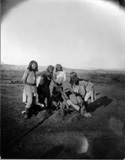The ideas of westward expansion, coast-to-coast boundaries, and bountiful natural resources were entwined within the American consciousness (see last post). Historian Frederick Jackson Turner studied the impact that free land–a huge part of America’s westward expansion–and its consequent settlement had on America and Americans. Continue reading
Tag Archives: Apache
Finer Things
When explorers and settlers first came to the New World, they brought beads with them. These items were small, lightweight, and (hopefully) useful trading goods. Native Americans had used beads before contact with whites, but they valued the new, unusual beads that the Europeans brought. Glass beads, usually made in Venice, Italy, were something Native Americans could not manufacture on their own, and were highly valued. Early trade beads were large, but eventually, tiny “seed” beads were introduced, and Native Americans used them on buckskin and cloth.
Different tribes developed different preferences for bead colors and ornamentation styles. Sioux Indians preferred chalk white or blue background colors, and various shades of blues and greens for design.The Crow liked blue and a color called Cheyenne Pink for their backgrounds, with red, dark blue, yellow, green, and sometimes purple design colors. Native American women invented two methods of using beads: loom beading and applique embroidery. For looms, they fastened birch bark with holes in it over bow-shaped branches and threaded rows of beads through the holes. Women created distinctive patterns from chains of beads in rows and columns; these patterns became associated with different groups so that an Indian man could be identified from a distance based on the bead color and pattern of his clothing.
______________________________________________________________________________________
Employees at Canton Asylum
When the Canton Asylum for Insane Indians first opened, employees took on a variety of tasks not necessarily in their job descriptions. Dr. Turner, the assistant superintendent and the only doctor at the asylum, often traveled out-of-state to escort new patients to the asylum.
On February 4, 1905, the Sioux Valley News reported that Turner and an employee named Hans Loe, had just returned from Fort Hall in Idaho with two Shoshone patients. That week, the financial clerk also returned from a trip to bring back an Apache patient. Turner was scheduled to go to Indian Territory to pick up an insane woman at Union Agency, while O. S. Gifford was set to go to Minnesota to get a patient from White Earth reservation.
Though this may have been an especially busy week, employees obviously could not give patients their full attention.
______________________________________________________________________________________
Independent Skills
Relationships between whites and Native Americans were not always antagonistic. Many settlers in the West had a healthy respect for Native Americans’ herbal knowledge (see 6/13/10 post) as well as their skills in hunting, tracking, riding, and shooting.
Americans had a fascination with these aspects of Native American culture, which were exploited in various “western” entertainments. Many times, however, groups of men simply indulged in games of skill or contests.
________________________________________________________
